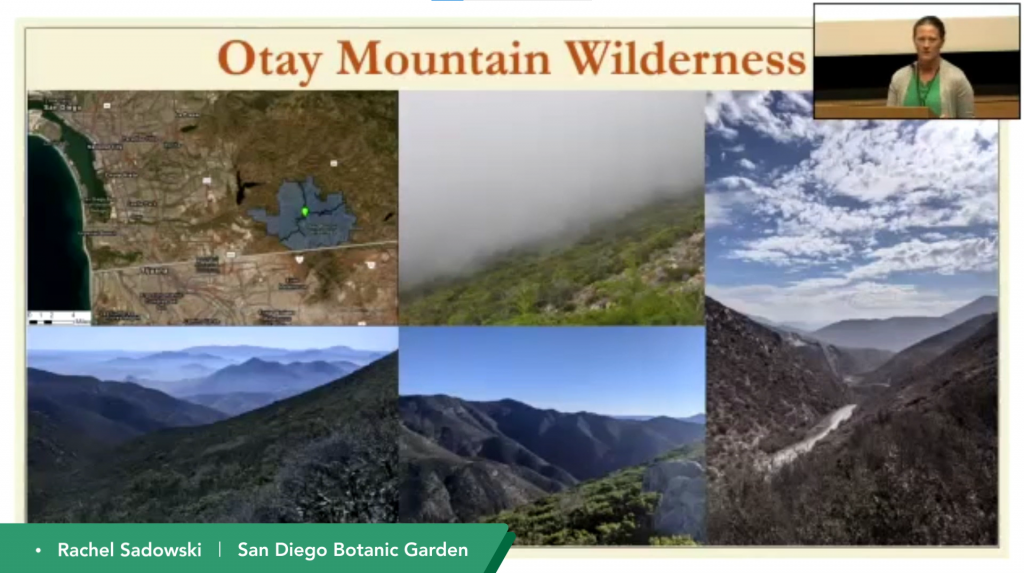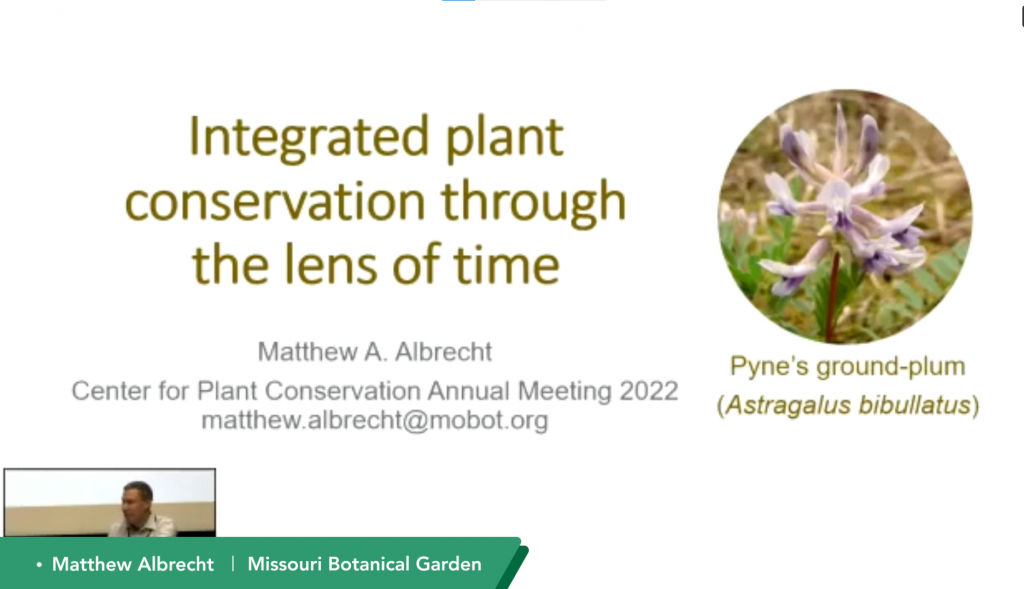
Hawai‘i is home to some of the most unique and diverse ecosystems on our planet, yet these ecosystems are among the most threatened of any in the world. The Hawai‘i Strategy for Plant Conservation, guided by the Global Strategy for Plant Conservation, addresses the conservation of plants in Hawai‘i with a framework of 5 broad […]
Read More…
A new geologic era requires new methods to prevent plant extinctions. Two recent publications on plant extinctions, one at the global scale and one for the U.S.A. and Canada, discovered that plants known from just a single site are most likely to go extinct. In the U.S. and Canada, 64% of all known plant extinctions […]
Read More…

As the endangered species capital of the world, Hawaii has over 300 listed species, over 100 of which occur on US Army Garrison Hawaii lands (USAG-HI), the most of any Department of Defense installation nationwide. Through a cooperative agreement with the University of Hawaii, the US Army Natural Resources Program on Oahu (ANRPO) manages over […]
Read More…

During the past few years SABOT has been rebuilding their conservation collections through additional field work in deep South Texas, leading to re-establishing relationships with landowners and developing new contacts. Throughout this time, we have made numerous collections of various rare plant material, and have slowly improved our rare plant collection to include newly obtained, […]
Read More…

Nestled against the U.S. border with Mexico in southeastern San Diego, the Otay Mountain area is home to more than 50 rare taxa of native plants, many of which are endemic to this region and poorly represented in ex situ conservation collections. Building upon early successes in the San Diego Botanic Garden’s (SDBG) fledgling science […]
Read More…

Lauritzen Gardens is dedicated to the conservation of plants and the biological diversity they support. Located in Omaha, Nebraska, our conservation efforts are focused on the ecological systems of the Midwest and Great Plains. Seed banking and rare plant research are major elements of this work, but these projects mostly occur in remote settings far […]
Read More…

Memorial University of Newfoundland Botanical Garden (MUNBG,) in conjunction with the Limestone Barrens Species at Risk Recovery Team, plays a crucial role in the maintaining of ex situ populations of rare Newfoundland plants. Our rare plants are confined primarily to the limestone barrens region of the Great Northern Peninsula, Newfoundland. This small region only comprises […]
Read More…

Mt. Cuba Center’s milestone is becoming a new Participating Institution in 2021. This talk is meant to introduce Mt. Cuba Center, describe the ways we engage in plant conservation with our guests, and note some of our collaborative projects with conservation scientists. Mt. Cuba Center is a botanical garden created with a conservation purpose: to […]
Read More…

The Southeastern Grasslands Initiative (SGI), based out of Austin Peay State University in Clarksville, TN works to conserve, restore, and promote native grasslands of all types throughout a 24 state region. Earlier this year, SGI joined the CPC as a Participating Institution (PI) due to its growing efforts in in situ and ex situ rare […]
Read More…

Dense stands of columnar ‘tree cacti’ similar to those in the Greater Antilles were once found in the Florida Keys, but harvesting, habitat loss, damage from mammals, climate change, and sea level rise led to a population crash that landed the cactus on the US endangered species list in 1984. Fairchild Tropical Botanic Garden’s conservation […]
Read More…

In 2018, to make way for a new bridge being constructed over Pinto Creek just south of Miami/Globe, Arizona the DBG salvaged 34 endangered Echinocereus arizonicus (Arizona hedgehog cactus). These plants were brought back to the garden to recover, propagate cuttings, and collect seed for banking. Upon completion of construction in 2022 we were able […]
Read More…

Seabeach amaranth (Amaranthus pumilus) is a federally threatened, fugitive annual species found on barrier islands off Atlantic coast from South Carolina to Massachusetts. Beginning in the 1980s, the North Carolina Botanical Garden (NCBG) has worked to secure ex situ seed collections. Surveys for seabeach amaranth conducted in the late 1990s returned counts of >200,000 individuals […]
Read More…

For more than 25 years the State Botanical Garden of Georgia (SBG), and our partners in the Georgia Plant Conservation Alliance (GPCA), have been working to augment natural populations of imperiled species across Georgia by propagating plants and returning them to strategically selected sites in situ for conservation purposes. Additionally, we work with landowners, public […]
Read More…

For over three decades, the Missouri Botanical Garden has spearheaded an integrated conservation program with state and federal partners to improve conservation outcomes with the federally endangered wildflower, Pyne’s ground-plum (Astragalus bibullatus). Here, I highlight three key programmatic milestones critical to the successful recovery of this species. First, seed collections made over three decades from […]
Read More…












